1. Let’s start with the origins of the book. When did you decide it was time to write this book? What helped you feel ready to do this?
It was about four years ago, I was chatting to my publishers (who published From Cape to Cairo) and they asked if I was keen to do another book and I said “Yes, of course!” But then I had to think about what kind of book it was going to be, as there are so many amazing books available at the moment. Especially as there were lots of young black chefs putting out books that featured African cooking – I didn’t want to duplicate anything. But after a while I realised it’s not really duplication because a recipe is a recipe and it all comes down to how you treat it and put it across. I knew I had to come up with a theme for the book – I knew I couldn’t do something with a chapter for starters, then one on soups, etc. So I thought I’d base it around my life story because younger chefs and writers always ask me where I started and what brought me to where I am. It made sense to me to write a book that tells those stories. I also thought it would be nice to have the book come out when I’m celebrating 40 years in the industry, while also celebrating that my journey with food started long before that. I wanted the book to start as far back as I could remember and document the role food played in my life, right from my childhood and then divided up into decades after that, depending on what was happening in my life at the time. It’s interesting because those decades fell perfectly in sync with a new stage in my life, so I could group them nicely together.
View this post on Instagram
2. The book is the most heartfelt ode to an incredible life. What was it like pouring your soul onto these pages?
I attended a book fair a while ago and attended a session on writing memoirs and one of the writers said that “if you’re not prepared to tell it all, then don’t write the memoir at all”. And yet, there are still some very painful stories I left out of the book because I didn’t feel ready to talk about them, and because they didn’t centre around a food memory, and I really wanted to focus on the food of my life.
3. The progression of recipes from your childhood to your adulthood (and early days of your career) tells a remarkable story. In the book, you refer to your love of Western recipes and food and then you tell the story of how you tried to champion African (and South African) cooking. Can you talk a little about this journey of embracing international food while still remaining true to your roots?
At the beginning of my career, I think I felt like that was the way to go, that you need to know Western food because that’s what all the chefs were cooking at the time. I also had books such as Cook and Enjoy and the Larousse that all focus on Western cooking and I felt it was important to understand everything about it. That’s also why I enrolled in a Cordon Bleu cooking course, because I wanted to know more about it – and this was good because it taught me all the basics, the methods and the techniques. But then there came a time when I realised that our food, African food, is not documented. In our communities, for example, there will be one person who’s an expert on traditional ginger beer, there will be only one person who’s best at making dombolo or any of the traditional meals because they weren’t documented and recipes were passed down from your family. So you wouldn’t know how to make something if your mom didn’t make it and it can’t be like that, all of us should be able to make all of these dishes. So I set out to learn how to make these things properly because originally the recipes would be “just throw in a handful of this” and “a pinch of that” because it was someone’s grandmother’s recipe, and I wanted everything to make sense. This led me to experimenting, researching and testing more, beginning with traditional South African dishes. You know, we cook French food, and Mexican food, but there was nothing representing South Africa and the African continent as a whole, which is how my book From Cape to Cairo came to be. Now, my daughter and her daughter would be able to cook our food, because it’s documented and it makes sense in a recipe form.
4. You’ve experienced immense heartbreak in your lifetime. Can you share how food comforted you and your family during these times? Did you find that it brought you all closer together?
I suppose food will always bring people together and I always say that I eat when I’m happy and in pain – I just generally eat! The only time I don’t eat is when I’m grieving, when my heart is breaking, which has happened a lot in my life. But generally, my family will find an excuse to get together to eat – and we all love to cook and then eat, which always brings us together.
5. This might be like asking you to pick a favourite child, but can you tell us which are some of your favourite recipes in the book? Is there perhaps a dish (or dishes) you make for a large family gathering or celebration, for example?
This is a hard question because I love all the recipes in this book, but I’d have to say the dishes in the first two chapters resonate more with me because they’re something I’d choose to soothe me. Like the lentil stew my mom used to make when we were growing up is one of my favourite comfort foods, or the pap and steak with spinach or morogo and tomato-and-onion gravy is another one I love. Then there are the dishes I go to when I’m not feeling my best, like my mutton curry, which feels like a hug in a bowl.
6. The South African food landscape has changed so much since you started working in the industry. Can you talk about the changes? How do you feel about where we are now?
I believe that, at last, there’s more talk about traditional South African food. For the longest time we dabbled in cuisines from all over the world but over the last two years there’s more prominence of African food, more plant-based food and to our crops and grains, which is very exciting. Even something as simple as eating insects is something that’s come back as a trend, but this is the food we grew up eating – simply grilled and served with pap.
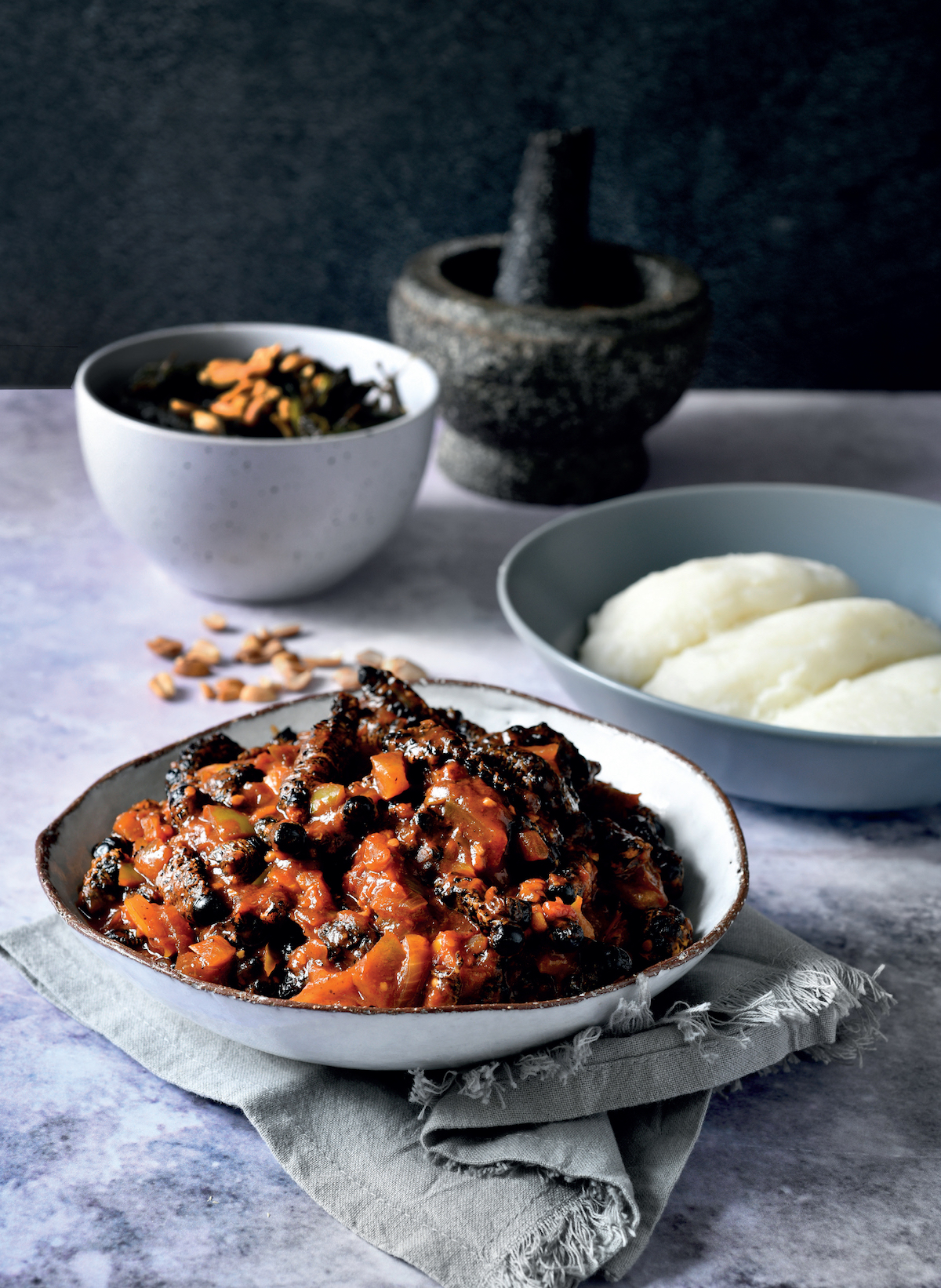
7. What do players in the food industry still need to do to keep moving forward?
I suppose in life you always have to keep pushing and improving. The public depends on us as trendsetters, and I think we must make sure we keep putting our own food on a pedestal. We must showcase it more, experiment with it more as there’s so much to be done with local food and ingredients. For example, I remember being asked to cater a cocktail party for former President Mbeki in Italy and at first I was stumped because South African food is so robust and served in large, generous amounts and I had to do something with these tiny little bites. But it was amazing because once I’d set my mind to doing it, it worked out so well serving traditional African food in this canapé style. The point here is that we need to push ourselves and the boundaries a bit while keeping the essence of what makes African food so great, like we do with so many other international cuisines.
8.What’s a local ingredient that you’d like to see people cooking with more? And how do you like to use it?
I’d like to see grains, like sorghum or mabele, being used more because they’re such a healthy carbohydrate. Then in terms of vegetables, you see lots of spinach, but I think people need to eat more of something like amaranth, which is real morogo and is just a lovely and delicious ingredient to use. There are so many others, like samp, which is also so healthy, especially when mixed with beans. I really would like to see people using these nutrient-dense ingredients even more, but it feels to me like people are waiting to see these things in health shops alongside other trendy ingredients, when in fact they’ve been here the whole time.

9. If you had to teach all South African kids five recipes before they left home, what would they be?
Well, I can tell you when my daughter left for university, I wasn’t worried about her cooking for herself. I was, however, very worried about my son moving to Cape Town to study, so we held a crash cooking course to teach him the basics. The first thing I taught him was how to cook pap properly, because that’s a good basic. Once you know pap, you can add on many other things. After pap, we moved on to cooking rice properly. Then the veggies, and at the top of my list will always be spinach, so we spent nearly a day just focusing on cooking that, along with pumpkin and cabbage. Lastly, it was the meats, I taught him how to make a basic chicken stew and a beef stew. It was very important that my kids learned to cook for themselves and I think it worked because he’s quite a good cook now.
10. There are lots of new voices in the SA food scene. Who are some of the people you support and are excited about?
I love them all! I love how daring and fearless they all are, they’re all so creative and full of energy. I’m most excited about these talented young black chefs because for a very long time it felt like it was just me in that space, alongside lots of white chefs. It’s exciting to see these up-and-coming black chefs bravely move into this field. And there are so many! People like Mogau Seshoene, Zola Nene, Siba Mtongana, Nti Ramaboa, Zanele van Zyl, Lesego Semenya, Tumi Sebopa at True Love and Vuvu Mncube who was at Food and Home. The list goes on and there many I’ve left off here, but these people inspire me so much and it’s so exciting.
11. You say that “if you can read you can cook”, yet some people still find cooking so intimidating. What would be your advice to someone wanting to develop more confidence in the kitchen?
Practice makes perfect, so you just need to keep practising. You’ll develop confidence once you develop the skill, so if you make a sponge cake and it flops, try again until you get it right. The more you cook, the better you’ll become and if you have the passion for cooking, you’ll learn so quickly. I really do believe that if you can read, you can cook, and by that I mean read the recipe carefully, try it out and know that you can try again if it doesn’t work. I think as long as you’re getting your recipes from trusted sources, you can’t go wrong.
12. Lastly, I have to know, after all this time, do you still say a little prayer when you put a cake in the oven?
Even more so now than before! At my mature age, I find myself walking into a room and forgetting what I went in there for, and sometimes the same happens with cooking. Once I think everything is in, I have to go back to my recipe to make sure I didn’t forget to add eggs or something. So when I put the cake in the oven I say a little prayer that I didn’t double up on baking powder, for example, or leave something important out.
Dorah’s book, 40 Years of Iconic Food is available now. To keep up with Dorah, follow her on Instagram.

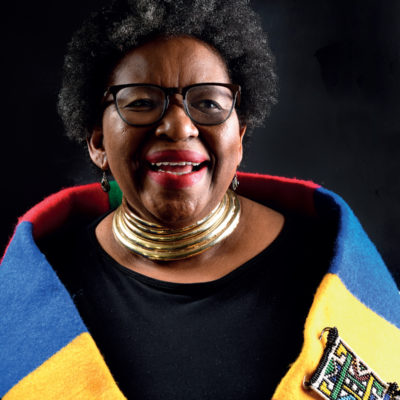

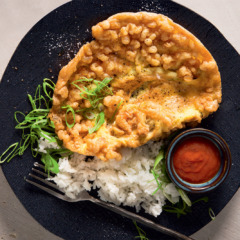
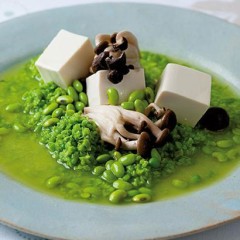
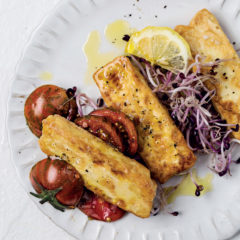
[…] from around the country. Some of the individuals that the curators credit include the late great Dorah Sitole, Justice Mathupe – Limpopo edible insect tracker extraordinaire, TASTE’s contributing editor […]